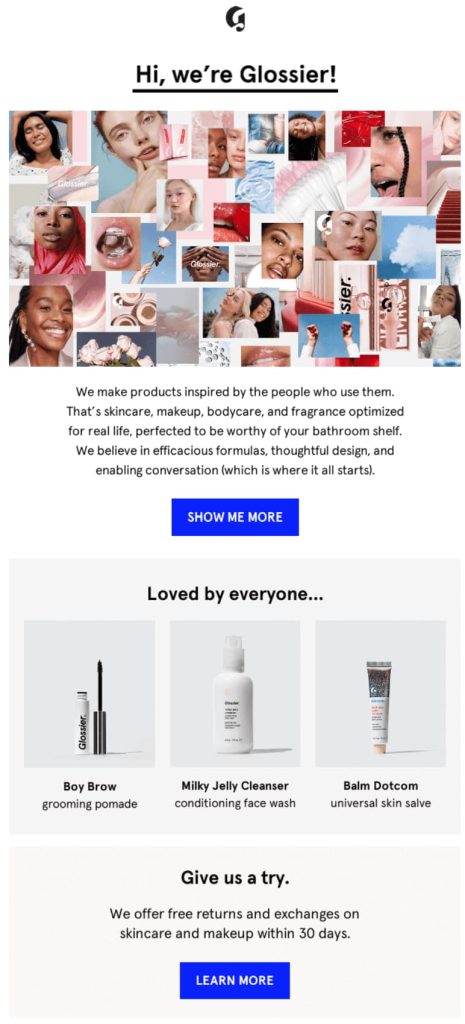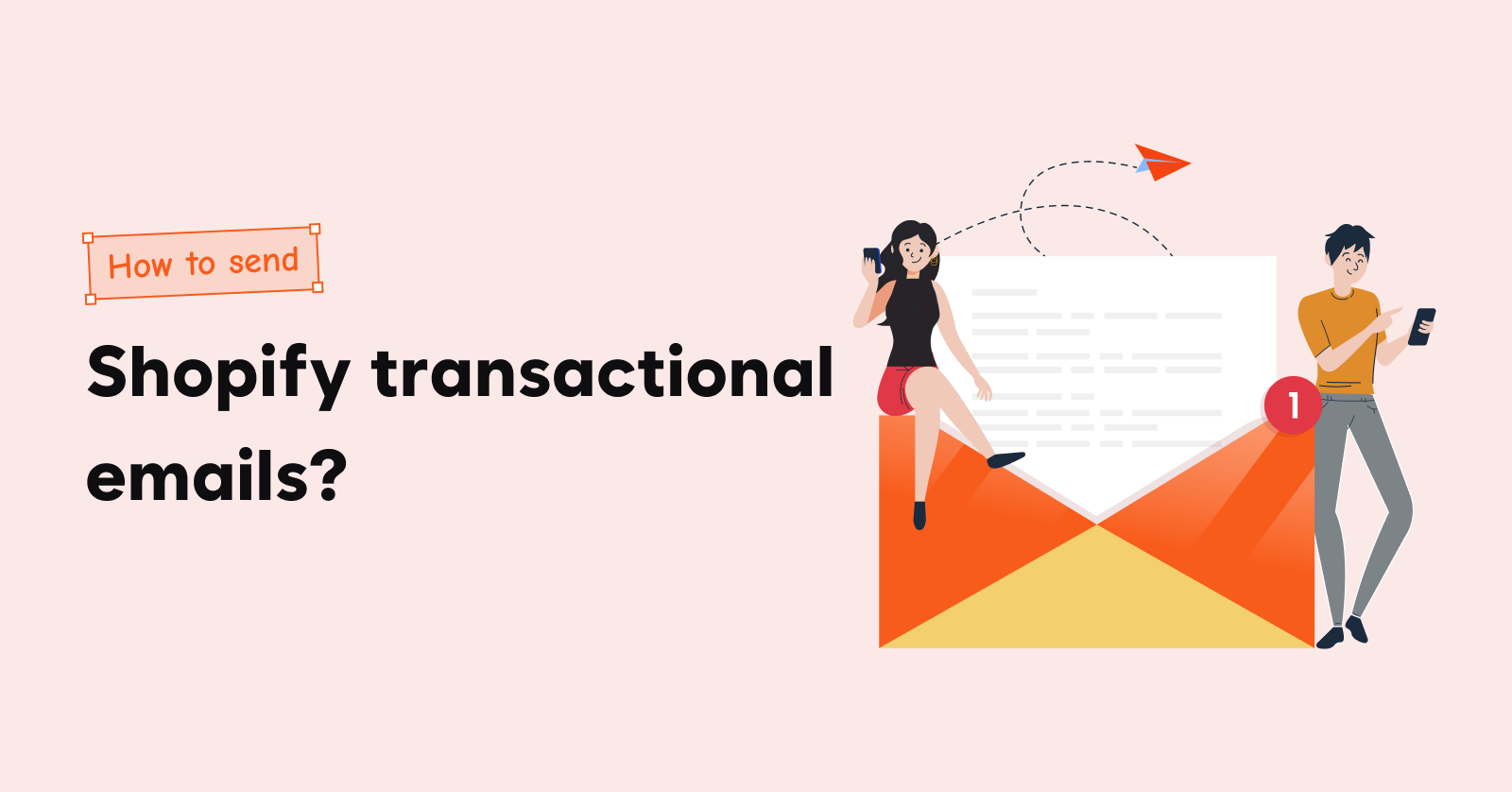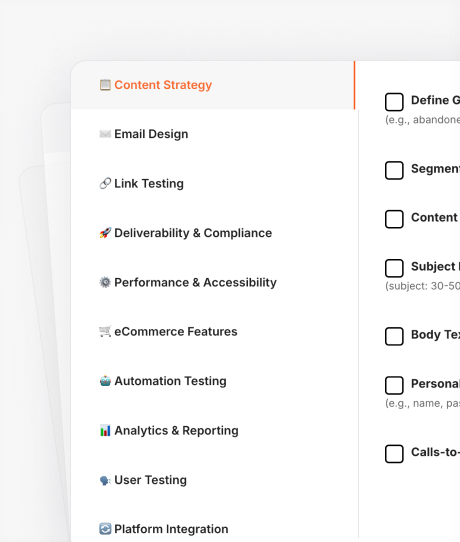Writing a welcome email is trickier than it sounds. It’s your first impression, and you’ve got seconds to hook a subscriber. Yet, many brands fall short, either being too generic or not offering enough value. So, what makes a welcome email copy stand out?
The welcome email example we listed addresses objections, showcases their brand’s uniqueness, and nudges the reader towards their first purchase, all while maintaining a tone that’s welcoming, not pushy.
Too often, businesses forget the purpose of a welcome email campaign – It’s not just about saying “thanks for subscribing.” It’s about writing engaging and converting welcome email copy.
Learn how to do that in this blog:
- What should your welcome email campaign achieve?
- 10 Best Welcome Email Examples
- How to write a welcome email?
- Welcome series email example
Send automated welcome emails in a few clicks with Retainful’s easy-to-setup automation.
What is a welcome email?
A welcome email is the first message a brand sends after someone subscribes. It should be sent immediately after sign-up, introducing the brand, offering value, and guiding the subscriber to take action.
What should your welcome email campaign achieve?
A welcome email campaign is your first chance to establish a lasting connection with a new subscriber through email marketing. Here’s what it should focus on achieving:
- Addressing common objections
- Highlighting your Unique Selling Proposition (USP)
- Nudging towards the first purchase
- Encouraging to explore further content or products
10 Best Welcome Email Examples
These welcome email examples show how to engage new subscribers and guide them towards the purchase. So, get your notes ready to gather the tips.
- The best welcome email examples are:
- First purchase offer and product recommendations
- Welcome message with Founder’s note
- That feeling of a community
- Reinforcing the brand’s USP and introducing best-selling products
- Creating Trust with Welcome Messaging
- B2B welcome email example with actionable next steps
- Welcoming with appealing visuals
- Welcoming email for a newsletter subscriber
- Welcome email with great brand messaging
Let’s pick apart the best elements in these welcome email marketing examples.
1. First purchase offer and product recommendations

What we like about this welcome email example?
This welcome email marketing example does a fantastic job of delivering value upfront by offering a 15% discount with the code “WELCOME15”. Discounts in welcome emails are one of the best ways to incentivize first-time purchases.
Rather than just showing a few random items, this welcome email template thoughtfully categorizes products based on lifestyle needs.
Welcome emails are all about nudging the customer to take the next step. In this welcome email example, the use of CTA like “SHOP NOW” and “LEARN MORE” makes the next steps clear.
2. Welcome email message with Founder’s note

What we like about this welcome email example?
Instead of launching into a sales pitch, this welcome email example eases you into a story. That’s what a welcome email should do. It should paint a picture of the future your product delivers. This one nails it.
A welcome email discount is offered clearly. But the email doesn’t lean on the discount alone. The value is in the transformation, the technology, and the experience.
In this great example of welcome email, objection handling is built in. All of this is tucked neatly at the bottom, so by the time a reader reach it, any resistance they had is already melting.
3. That feeling of a community

What we like about this welcome email example?
First, the headline hits differently. Forget boring. Forget corporate. This line doesn’t just say “you subscribed” – it is written how your new friend would welcome you.
Instead of blasting the subscriber with everything they sell, this best welcome email marketing example shows you what others are loving. It’s social proof without being overt. These aren’t just products, they’re faves that the community swears by.
The line “THANKS FOR JOINING OUR COMMUNITY!” gives you that warm, fuzzy feeling. Bubble is positioning you as part of a community, not just a customer.
4. Reinforcing the brand’s USP and introducing best-selling products

What we like about this welcome email example?
This e-commerce welcome email example checks all the boxes – clear value, a personal touch, an invitation into a community, and a solid visual design that reinforces the brand’s identity.
If you want to get your customers excited about your brand from the get-go through e-commerce email marketing, Dash Water has shown you exactly how it’s done.
The welcome email offer isn’t buried or subtle. It’s loud and clear. The code is placed in a prominent spot, making it irresistible for first-time visitors. This helps to increase the chances of a quick conversion.
The best welcome email does more than sell products. It invites customers to join a purpose.
Explore e-commerce email templates and learn how to design high-converting ones:
5. B2B product activation welcome email

What we like about this welcome email example?
Coda instantly puts you in a friendly, warm space. It’s not corporate or formal, just the right tone for a B2B welcome onboarding email.
The B2B welcome email example does an excellent job of breaking things down into digestible pieces.
Coda allows users to visualize immediately how their workspace looks and feels. This is important because it taps into user creativity and sparks excitement to use the platform.
Each section in this welcome email design is paired with a clear call to action. Simple “Explore” buttons for each category prompt users to dig deeper into what interests them.
Customize and send on-brand welcome emails that bag the first purchase with Retainful.
6. Creating Trust with Welcome Messaging

What we like about this welcome email example?
The section in this best welcome email example labeled “SLEEP SCIENTIFICALLY” does a great job of using the best email marketing strategy – reiterating the unique value proposition.
Rather than just listing the product’s features, this welcome email copy focuses on the science behind the solution and shows how the product can directly improve the user’s life.
The “SHOP NOW” and “SEE HOW” buttons give the email a clear direction, pushing users towards the next logical action: buying or learning more.
In this example of great welcome email, the use of a large product image paired with vibrant icons showcasing the benefits of using the product makes it clear how the product addresses the user’s needs.
7. B2B welcome email example with actionable next steps

What we like about this welcome email example?
Instead of bombarding the user with overwhelming details, this B2B welcome email example offers resources to help the new user get started – from a direct link to the Shopify site and video tutorials to the Shopify blog for inspiration.
This B2B welcome email campaign example highlights key selling points immediately – the ability to sell “everywhere”, which speaks directly to their audience’s need for flexibility and broad reach. This immediately tells the user that they’ve made the right choice.
8. Welcoming with appealing visuals

What we like about this welcome email example?
This great welcome email example is packed with customer-focused content, such as the offer of free returns and exchanges within 30 days, which makes new users feel secure in their purchase decision. This gives a sense of trust and eliminates any purchase hesitation, which is crucial for a first-time buyer.
The inclusion of vibrant images of happy customers in this best example of a welcome email and Glossier products creates a visual experience that draws the reader in. The imagery isn’t just promotional, it humanizes the brand.
9. Welcoming email for a newsletter subscriber

What we like about this welcome email example?
It’s not some generic “Welcome to our newsletter” text. Tom (the founder) is speaking directly to the reader, making the subscriber feel like they’re getting a personal message from someone who cares.
This welcome email for a new subscriber sets clear expectations. The subscriber knows exactly what they will gain by reading this newsletter.
Plus, the case studies being short and easy to digest is a smart detail that reduces friction for the reader. It makes them more likely to continue.
In this welcome newsletter example, Tom includes a personal touch with a GIF of himself. This is effective because it humanizes the message. It’s not just a corporate email, it’s coming from a real person.
10. Welcome email with great brand messaging

What we like about this welcome email example?
This e-commerce welcome email example is a masterclass in email copywriting.
The message “It’s YOUR run” in this welcome email copy speaks directly to the customer’s unique journey. It doesn’t talk about the company, it focuses on customers’ goals and ambitions that connect with the individual and their fitness goals.
“See our gear” and “Learn more about us” are action-oriented CTAs. It’s not just “click here,” but specific, meaningful actions that guide the subscriber to further engagement.
The tagline “Great running gear is our thing” speaks to the core of what Brooks represents. It reinforces the company’s values and adds credibility to the message, making the subscriber feel that they are in the right place.
How to write a welcome email?
Writing the perfect welcome email is like shaking hands with your new customer, it’s your first chance to make a lasting impression.
Let’s walk through the essential steps to turn this greeting into an engaging, conversion-driving email.
1. Start with a warm, personal greeting
While writing a welcome email, it’s your chance to create a connection right from the first attempt. Keep it friendly, welcoming, and warm.
Personalize the welcome email message by using the subscriber’s name if you can. A simple “Hey [Name], welcome to [Brand]!” works wonders. This is your first touchpoint, so make it human.
Related Reading: Learn how to segment your email list and send personalized emails:
2. Address common objections early
New customers might have doubts or hesitations about your product. Address these right upfront in your welcome email copy – “Is this the right fit for me?” “Will it work as promised?”
Acknowledge their concerns with a welcome email message like:
- “We know it can be hard to find the right product. That’s why we offer [return/exchange policy].”
- “We stand by our products with a 30-day money-back guarantee.”
- “Hundreds of satisfied customers trust our products – and here’s why”
This reassures them and builds trust instantly.
3. Encourage the next step with a clear CTA
Now that you’ve said hello and calmed any nerves, guide them to the next action. What’s the logical next step? Should they explore your products, start shopping, or read a blog post?
Whatever it is, make it crystal clear in your welcome email messaging.
- “Ready to shop? Check out our bestsellers.”
- “Want to know what our community loves? Explore here.”
A simple, compelling call to action drives them toward taking that first step.
4. Present Your First Purchase Offer
You’ve got their attention – now entice them with a valuable first purchase offer in your welcome email template. This is your opportunity to convert the warm lead into a paying customer.
- “As a thank you for joining us, here’s 15% off your first order with code: WELCOME15.”
- “Enjoy free shipping on your first order – no minimum required!”
Offer something exclusive in your welcome email, but keep the offer clear and simple. Don’t overcomplicate it with terms and conditions. Just let them know how easy it is to take advantage of in your welcome email messaging.
5. Communicate Your USP (Unique Selling Proposition)
Why are you different from the competition? What makes your product, service, or brand stand out? The best practice is to use your welcome email to clearly communicate your USP.
- “Unlike other brands, our products are made with [specific feature or value] to give you [tangible benefit].”
- “We are the only company that offers [unique feature], so you can be sure that you’re getting the best.”
Make sure this stands out visually in the welcome email template design – bold it, or give it a prominent position in the email.
6. Make It Visually Appealing
Lastly, remember that the design matters. The welcome email template design should be visually attractive, with:
- Clear sections for different points (welcome, offer, social proof, CTA).
- An easy-to-read layout that isn’t cluttered.
- Strong CTAs that stand out and guide the reader’s eye.
- Design a responsive email template
Welcome series email example
If a customer hasn’t purchased after the first email, a welcome email series helps nurture them, offering more chances to convert with tailored content and incentives.
Sending just one welcome email misses opportunities to deepen engagement. A welcome email sequence ensures you’re addressing objections, showcasing your value, and reinforcing your unique selling points over time.
The best welcome email series example is:
- Email 1: Welcome email (Sent immediately)
- Email 2: Value proposition (Sent 3-4 Days Later)
- Email 3: How to guide (9-10 days after the initial signup)
- Email 4: Social proof (12-14 days after the initial signup)
Learn more about sending a welcome email series in our blog:
Welcome Email Series – Examples + How to Create
Send automated welcome email sequences without the setup headache. Use Retainful’s ready-made automation workflow.
Wrapping up!!
Use the best welcome email examples as inspiration, but make it your own.
Personalize your message, focus on clear value, and guide the subscriber to take their next step, whether that’s exploring your products, reading a blog, or making their first purchase.
Don’t be afraid to use offers or incentives to drive that first action in your welcome email message, but always stay true to your brand’s personality.
Also Read:
- 15 Best Email Marketing Examples for 2025
- 9 Post-Purchase Email Examples That Retain Customers
- 9 Best Order Confirmation Email Templates & Examples
Frequently Asked Questions
To write a professional welcome email, start with a friendly greeting, introduce your brand, clearly state the value, and include a call-to-action (CTA). Keep the tone respectful, concise, and aligned with your brand’s voice.
Write a warm, personalized welcome message by addressing the recipient by name. Thank them for subscribing or purchasing, provide relevant information, and invite them to explore more. End with a clear next step or call-to-action.
“Welcome to [Brand Name]! We’re excited to have you with us. Enjoy exploring our [products/services], and let us know if you need any assistance. Your journey starts here – let’s get started!”
Welcome email best practices include personalizing the greeting, setting clear expectations, offering a value-driven incentive (like a discount), and providing easy next steps. Keep the email visually appealing, concise, and aligned with your brand identity.
A welcome email sequence is a series of automated emails sent to new subscribers over a period of time. It typically includes an initial welcome email, a follow-up with further engagement, and a message offering incentives or useful content.
To format welcome emails, start with a personal greeting, introduce your brand, and provide an overview of what’s to come. Use a clean, simple design with a prominent call-to-action (CTA).
Create a step-by-step plan with 3–5 emails: 1) Initial greeting and value introduction, 2) Educational content or features, 3) Exclusive offer or incentive, 4) Social proof and testimonials, 5) Encouragement to take the next step.
A welcome email typically contains a personalized greeting, brand introduction, value proposition, a clear CTA, and often an incentive (like a discount). It should also set expectations for future emails and encourage the next action from the recipient.
To welcome new customers through email, thank them for their purchase, express excitement about their choice, explain how to get the most out of their purchase, and invite them to explore more. Offer customer support and provide easy access to relevant resources.
A welcome email is the first contact, introducing your brand and setting expectations. An onboarding email guides new customers through the process of using your product or service, providing step-by-step instructions, tips, and support.



